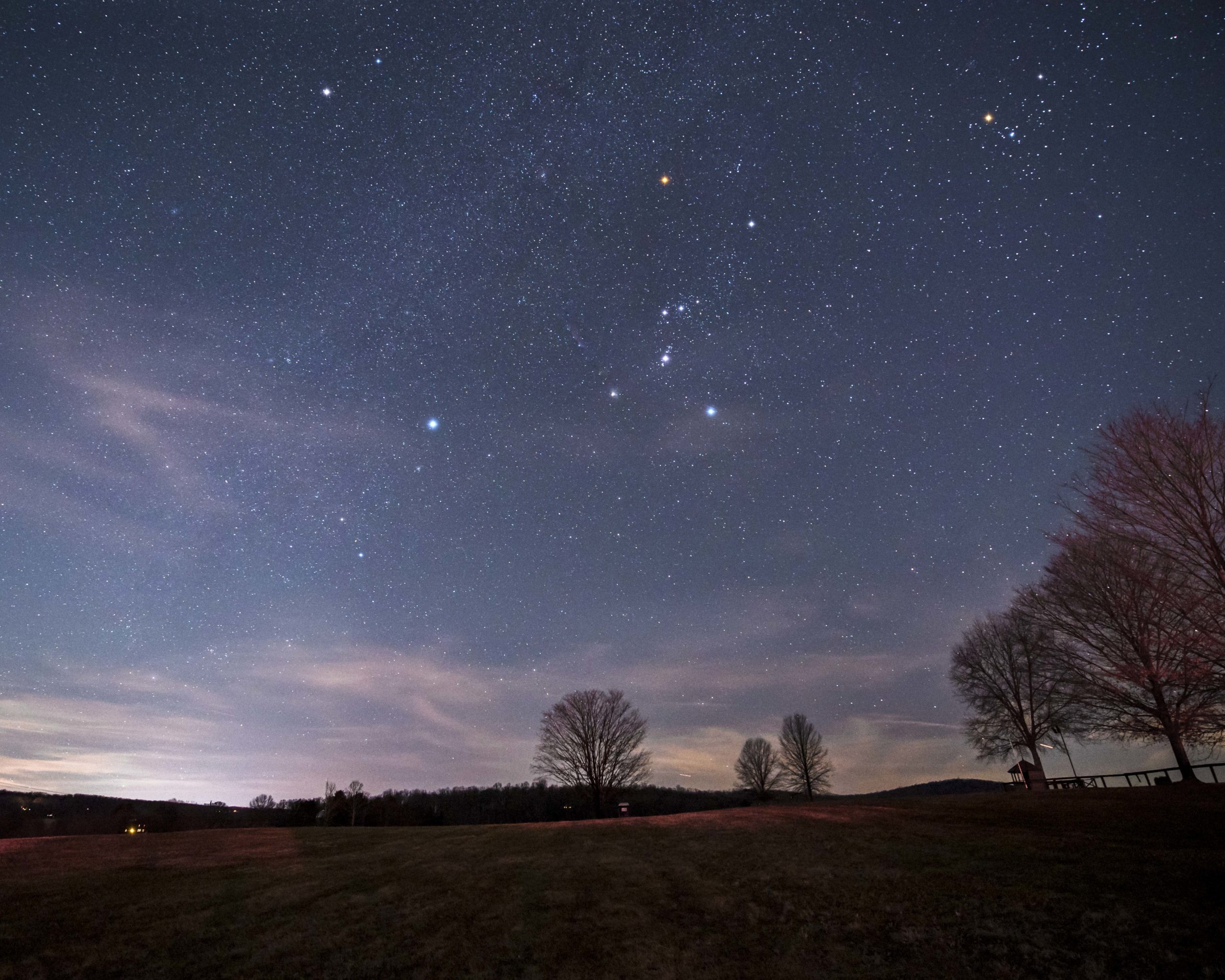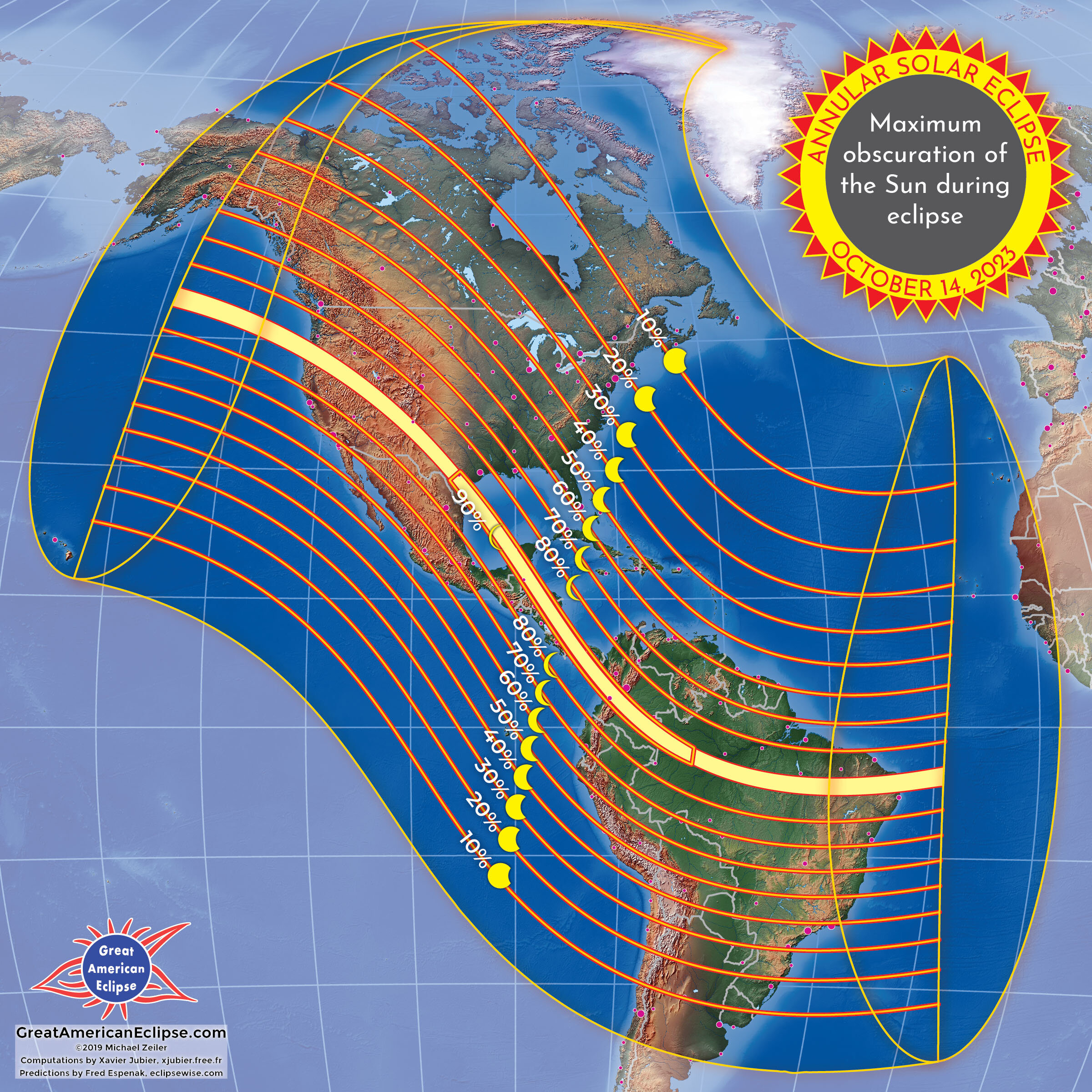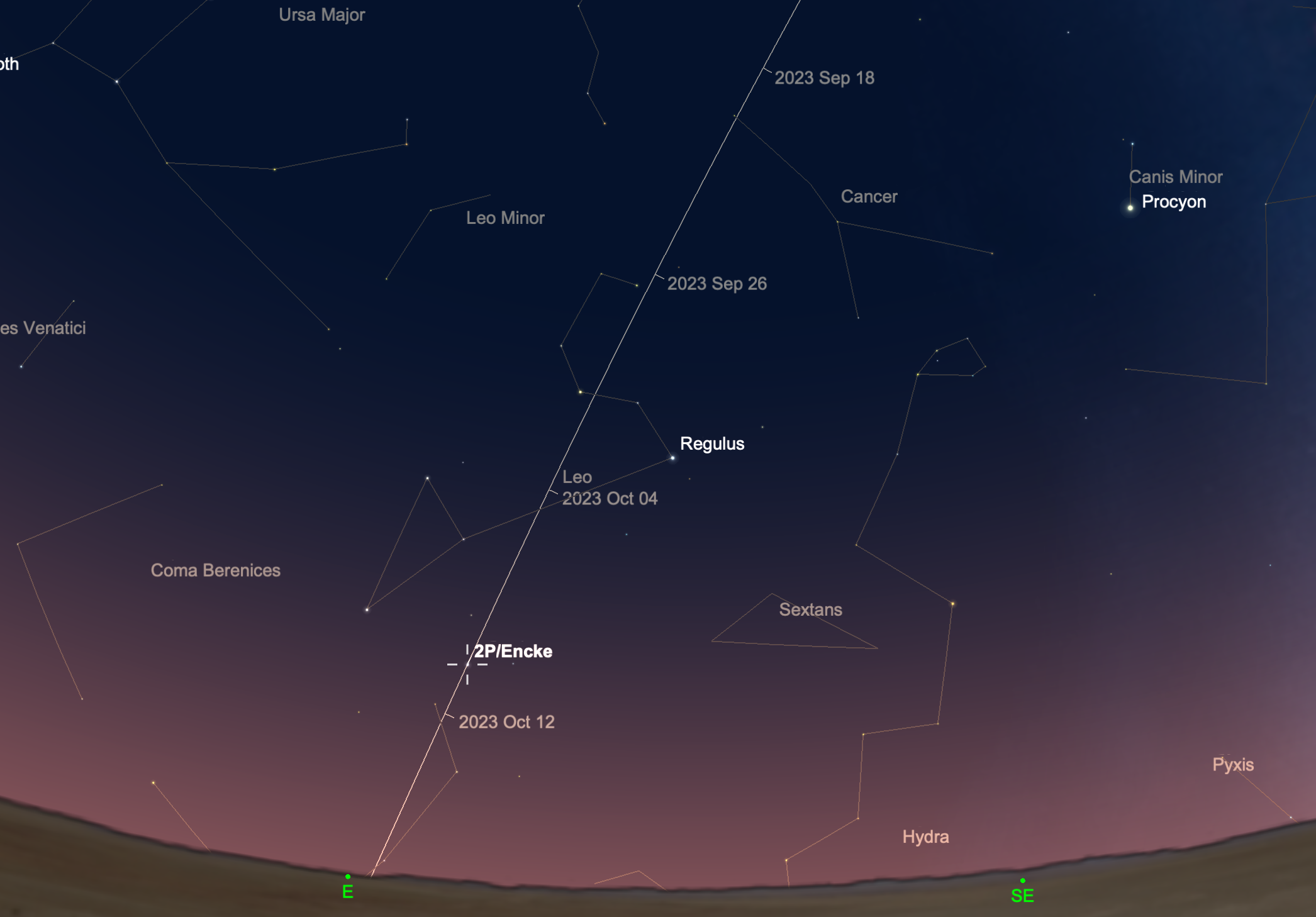
(Looking for last month’s ‘Night Sky’? Find it at this link…)
While deep-sky sights abound in the evening sky, our own solar system offers us the best sights this month. Jupiter and Saturn move into prime viewing territory, two meteor showers arrive, and a solar and lunar eclipse also fill out the month of October. Here’s what to see in the night (and daytime) sky this month.
1-2 October 2023. The fat waning Moon rises with Jupiter in the east in the mid-evening hours. Now just a month from opposition, Jupiter shines brightly at magnitude -2.7 and dominates the eastern sky before midnight and far outshines any star in the sky. The planet, now in southern Aries, is well-positioned for observing through the end of the year and into early 2024.
6 Oct. Last Quarter Moon, 13:48 UT
7 Oct. The waning crescent Moon lies near the star Castor and Pollux in Gemini in the pre-dawn sky.

10 Oct. Look to the east before dawn to see Venus about 2o south of Regulus, the brightest star in Leo, while the Moon lies about 3o north of the same star. Venus continues its excellent apparition as the ‘Morning Star’ and shines today at magnitude -4.5. In a telescope, its disk spans about 28” and appears as a thick crescent. As the month progresses, the planet’s disk becomes half-lit then moves into a gibbous phase.
12-16 Oct. Over the next two weeks, northern-hemisphere observers with very dark sky can see the zodiacal light in the east about 90-120 minutes before sunrise. This whitish glowing wedge of light appears to thrust upward from the horizon. The zodiacal light is simply sunlight reflected off tiny dust particles in the inner solar system.
14 Oct. New Moon, 17:55UT.
14 Oct. An annular solar eclipse arrives in a narrow band across North America (from Oregon to Texas), Central America, and northern South America. The eclipse occurs from 16:12 UT to 19:46 UT. Outside the band of annularity, many observers in the Americas will see a partial solar eclipse over a wide area. Look for precise timing and visibility at this link.

Oct. 15. It’s not much to look at, but little Comet 2P/Encke makes a return this month to our part of the solar system. After Comet 1P/Halley, Encke was the second comet for which a periodic orbit was calculated, in this case by its namesake Johann Franz Encke in 1819. The comet was seen by Charles Messier in 1786 and Caroline Herschel in 1795, among other observations. But it was Encke who figured out all these observations were of the same comet. With a 3.3-year orbital period, the comet is a frequent visitor to the inner solar system. But it’s not particularly bright. In mid-October this year, the comet may reach a peak brightness of magnitude 7.5 as it travels across Leo and Virgo. Grab a small telescope and have a look – it will have a dense coma and, at best, a small tail that points westward away from the Sun.

22 Oct. The Orionids, one of the best meteor showers of the year, peak in the early morning hours today. They usually show as many as 20-40 fast-moving meteors per hour in dark sky. These meteors can appear anywhere in the sky and trace their paths back to the radiant near the top of the club of Orion. Maximum activity usually occurs between midnight and dawn. The first quarter Moon gets out of the way by the time of maximum meteor activity this year. Like the Eta Aquariids in May, the Orionids are tiny pieces of Comet 1/P Halley that strike the upper atmosphere as the Earth passes through the famous comet’s debris field.
22 Oct. First Quarter Moon, 03:29 UT
23 Oct. Venus lies high and bright in the early morning sky at greatest western elongation some 46o from the Sun.
24 Oct. Saturn lies about 3o north of a growing gibbous Moon today. The planet is past opposition but still in a great position for observing in a telescope. The lengthening shadows that result from the angle between the planet, Earth, and Sun make for a more dramatic appearance of the rings when observed at high magnification in a telescope.
26 Oct. Tiny Neptune lies about 1.5o north of the Moon.
29 Oct. Full Moon, 20:25 UT
29 Oct. A partial lunar eclipse is visible in all of Europe, Africa, and much of Asia. Find precise timing for your location at this link.
31 Oct. The South Taurid meteor shower peaks on Nov. 6, but the shower is now underway. Look for bright meteors tracing their path back to Taurus which you can see in the eastern sky in the late evening. Because of increasing activity at the end of October, the South Taurids are sometimes called the “Halloween Fireballs”.